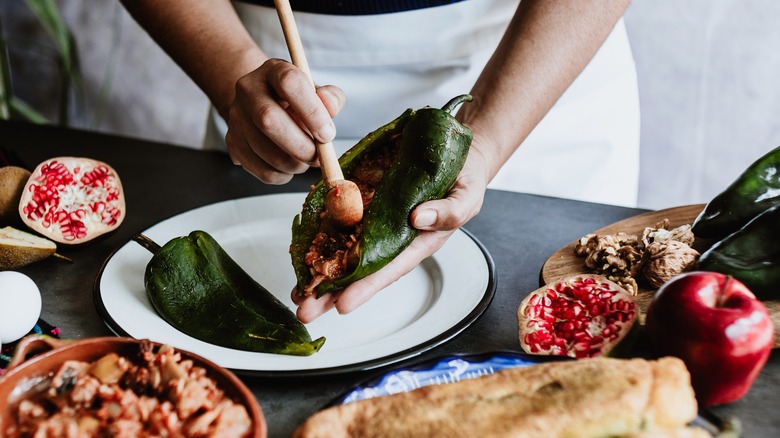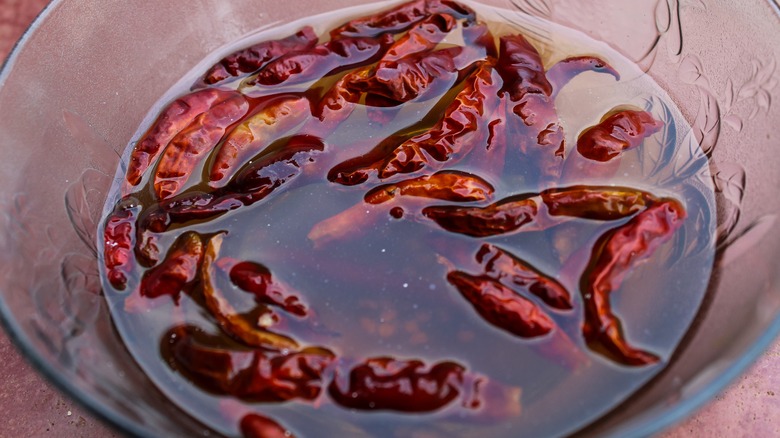The Importance Of Desflemar In Mexican Cooking
Mexican cuisine is among the most beloved in the world thanks to a wealth of unique and flavorful Mexican crops, including corn, beans, tomatoes, and chili peppers. Mexican cooking techniques, likewise, make the most of each ingredient: Corn is ground into meal for tortillas using the molcajete, the comal griddle is used to make everything from tacos to tortas, and guisados encompass countless stewed meats, vegetables, and starches. Chili peppers require a specific set of cooking techniques to help them impart the perfect balance of spice and zest that Mexican food is famous for.
A cooking technique known as desflemar encompasses the various methods by which Mexicans temper the heat and spiciness of chili peppers. In Spanish, desflemar literally translates to ¨expelling phlegm,¨ which makes sense when you consider the sinus-clearing effects a chili pepper can have. However, in the case of this set of cooking techniques, you'll remove the phlegm-inducing components from the chilies before adding them to a recipe. Desflemar removes the heat in order to let the chili pepper´s underlying flavors shine.
The infamously painful spiciness and heat of chilis come from a compound known as capsaicin, which concentrates in the white pithy part that connects the seeds to the fleshy walls of the chilies; you'll find it to a lesser extent in the flesh as well. The primary methods used to temper the heat, or "desflemar los chiles," consist of removing the pith and seeds before soaking peppers in a sugary, salty, or vinegary solution.
Easy steps to desflemar chilies
If you enjoy a bit of spice and heat, removing the pith and seeds may be the only necessary step you'll need to desflemar a pepper. While the seeds themselves don't contain much capsaicin, their removal is a byproduct of extracting the pith. In any case, you won't miss their slight bitterness and unpleasantly hard texture.
The easiest way to remove the pith and seeds is by cutting a chili pepper in half lengthwise and using a spoon to scrape the pith and seeds from the flesh. A grapefruit spoon's serrated edges and triangular point are especially well-suited for the job. Since capsaicin resides in the pith and the flesh, it's important to use protective food gloves when handling the exposed interior of chili peppers. While mild peppers like bell peppers and poblanos won't pose much of a danger to naked skin, you're likely to incur burning sensations from jalapenos and habaneros.
Soaking chilies in various solutions is another widespread desflemar practice. Just as sugar and tart ingredients are well-known remedies for overly spiced foods, they're also the most common ingredients in chili-soaking solutions. Some recipes also recommend soaking chilies in milk, another widely used ingredient to neutralize capsaicin. One soaking method involves creating a vinegar and salt solution in which to boil chilies before transferring them to a second solution of sugar water. Another method entails soaking chilies in hot water before adding a simple syrup of boiled piloncillo and a dash of vinegar.

